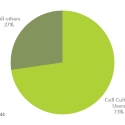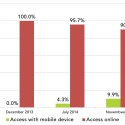The Centers for Medicare & Medicaid Services (CMS) regulates all non-research laboratory testing performed on humans in the U.S. through the 1988 Clinical Laboratory Improvement Amendments (or CLIA for short). Many of the tests performed are genetic tests that assess DNA and/or RNA. For years this amounted mostly to PCR and blotting methods. However, more and more clinical labs…
read more >Epigenome Roadmap of Gene Switches Published
A slew of papers focused on an epigenome roadmap and the nature of gene regulation were published this week, highlighting the increasing importance of understanding not just genes but the switches that control them. The focused effort of more than 200 scientists that authored the publications was the topic of a New York Times article today. Understanding the organization of…
read more >Top Laboratory Practices in the Life Sciences
It feels like we all know that there are certain laboratory practices that are common in most life science labs but how well do we know the list? Percepta polled over 1,000 global scientists to find out the relative usage of 11 techniques used in life science laboratories. While there may have been some shifting of the rank order,…
read more >Cell Culture Users Still Favor Gibco as Supplier of Choice
Cell Culture is among one of the most widely used research methods in life science laboratories globally, and is present in 73% of the laboratories recently polled by Percepta (see figure).
This large market has the attention of many suppliers wanting their fair share of the…
read more >Mobile Devices Used More by Life Scientists to Share Opinions
Smart mobile devices have changed our lives and we now walk around with the internet in our back pockets. They help us shop, share information, and update our favorite social media profiles. However, how people use mobile devices tends to vary depending on the task at hand (pun intended). Many find their mobile devices to be useful in the…
read more >NIH Government Funding for 2014 Restored…Mostly
On February 10th, 2014 the National Institutes of Health (NIH) released details about its fiscal mandates for the year. President Obama signed the Consolidated Appropriations Act (Public Law 113-76) into law on January 17th 2014, ensuring funding to NIH for the fiscal year ending September 30th, 2014.
The Act provides NIH with a budget of $30.15 billion, which is an increase…
read more >Synthetic Biology Building Momentum with Researchers
With the explosion of biological data now available as a direct result of genome sequencing initiatives, use of commercial gene synthesis and pre-designed synthetic biology tools is becoming increasingly popular. We wanted to understand how molecular cloners feel about using synthetic biology tools as replacements for in-house methods such as cloning. So, in December 2013, we polled users of…
read more >Protein Analysis Products: Effect of U.S. Sequester
In October 2013, we polled users of protein analysis products in the U.S. to understand how, if at all, budget sequestration has affected their lab’s purchase of protein analysis products. Results reveal that both non-profit and for-profit researchers are impacted by budget sequestration as approximately 56% of non-profit and 29% of for-profit respondents indicated budget sequestration has definitely affected…
read more >RNA Expression Profiles Fuel New Tuberculosis Diagnostic
In places where controlling tuberculosis (TB) is a concern, there is an urgent need for simple, inexpensive diagnostics that can identify active TB, particularly in the context of HIV infection. In a recent paper (PLoS Medicine, October 22, 2013), researchers discovered that a unique RNA transcriptional signature found in whole blood could distinguish TB from other diseases including HIV…
read more >Optimized Gene Expression Analysis Aids Drug Development
During drug development, it’s critical to monitor cellular responses to promising compounds, which includes keeping tabs on the activities of various gene promoters. Researchers from the RIKEN Center for Life Science Technologies report a new method to accomplish that, using the advanced gene expression analysis method CAGE followed by single-molecule sequencing.
Click to enlarge. Original image…
read more >


